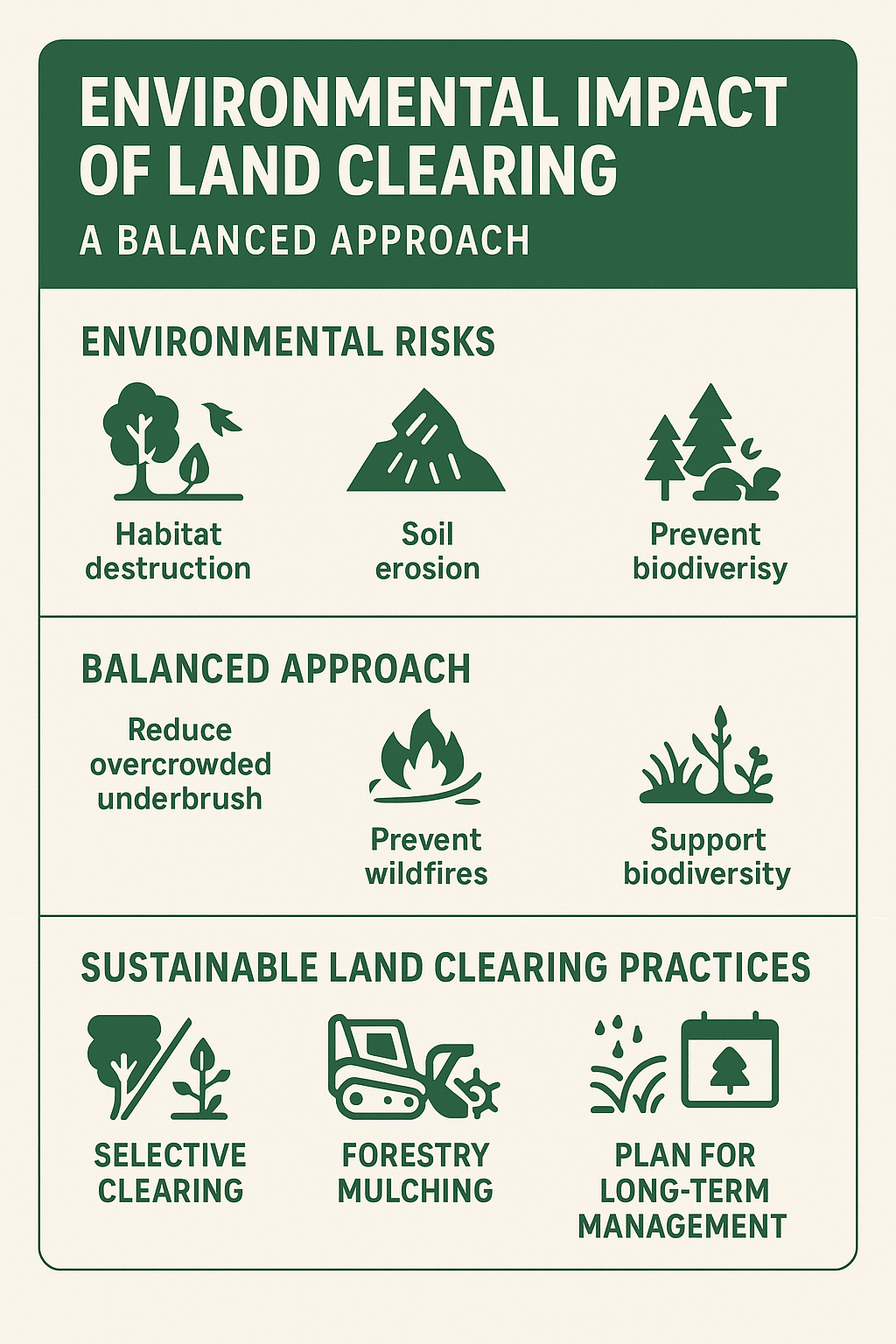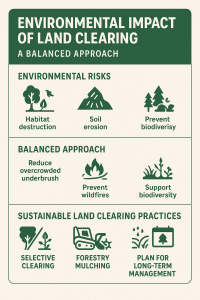Land Clearing: How to Be Environmentally Responsible
Understanding the Environmental Impact of Land Clearing
Land clearing is often the first step toward new development, farming, or recreational use, but it also comes with real environmental consequences. Remove too much too fast, and you risk soil erosion, habitat destruction, and the loss of important natural resources. On the flip side, when done responsibly, clearing can create healthier forests, prevent wildfires, and even improve biodiversity. The trick is finding the right balance to effectively manage the environmental impact of land clearing.
Why Balance Matters
Every landowner faces the tug-of-war between making property usable and protecting the natural environment. Clear too aggressively, and you might unintentionally:
Disrupt wildlife habitats
Increase runoff into nearby streams or wetlands
Introduce invasive species
But when done carefully, land clearing can:
Improve soil health by removing overcrowded underbrush
Reduce the risk of wildfires
Create space for managed hunting grounds, food plots, or trails
Best Practices for Sustainable Land Clearing
1. Choose Selective Clearing Over Clear-Cutting
Not all trees and vegetation need to go. Selective clearing allows you to keep mature trees and natural buffers intact while removing invasive or overgrown species. This helps preserve shade, habitat, and soil stability.
2. Use Forestry Mulching
Forestry mulching is one of the most environmentally friendly methods of land clearing. Instead of hauling away debris or burning piles, vegetation is mulched directly into the soil. This not only reduces erosion but also returns organic matter back to the earth, creating nutrient-rich ground cover.
3. Protect Sensitive Areas
Wetlands, streams, and slopes are especially vulnerable. Establishing protective zones around them ensures you’re not unintentionally causing runoff or damaging fragile ecosystems.
4. Plan for Long-Term Management
Land clearing isn’t “one and done.” Re-clearing, controlled burns, or ongoing mulching may be needed to maintain balance. Having a management plan keeps the property functional while ensuring it doesn’t swing back into overgrowth or environmental harm.
5. Work with Professionals Who Care
DIY land clearing may save you money upfront, but it can cost you in environmental damage (and sometimes fines) later. Partnering with professionals who understand both efficiency and ecology ensures your land is usable and sustainable.
How MotorCity Hot Shot Helps Reduce the Environmental Impact of Land Clearing
At MotorCity Hot Shot, we specialize in land clearing that respects the land as much as it respects your goals. Our forestry mulching process is designed to minimize impact, recycle nutrients, and leave your property cleaner, safer, and ready for use. Whether you’re creating food plots for hunting, preparing land for new construction, or just cleaning up overgrowth, we’ll help you do it in a way that keeps conservation front and center.
👉 Ready to clear your land without hurting the environment? Contact MotorCity Hot Shot today

